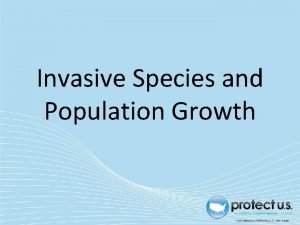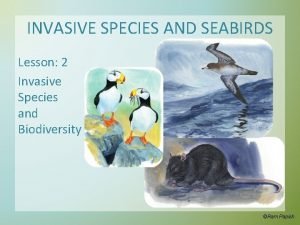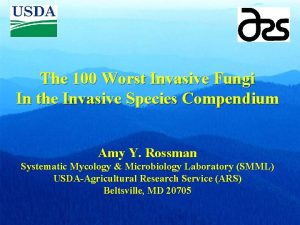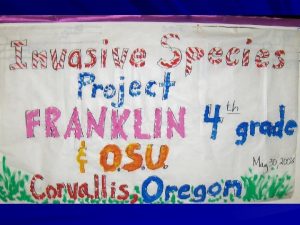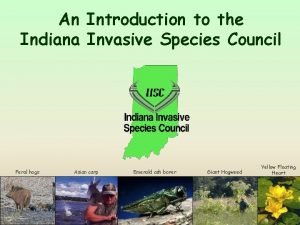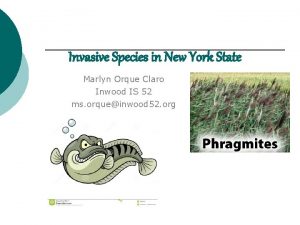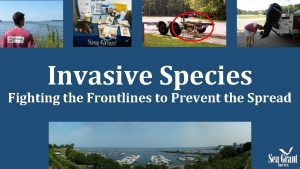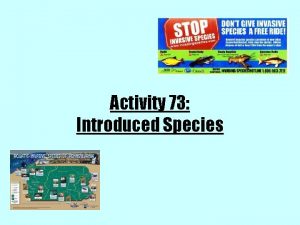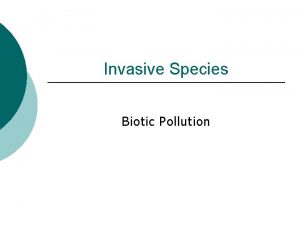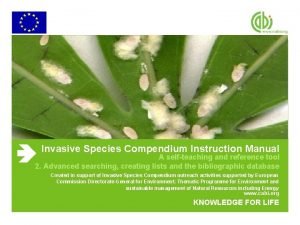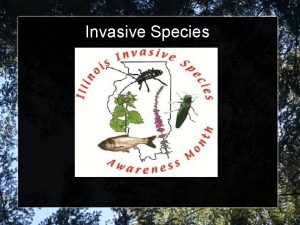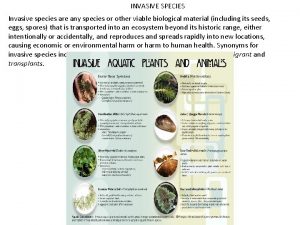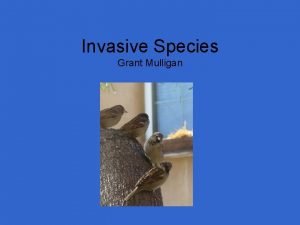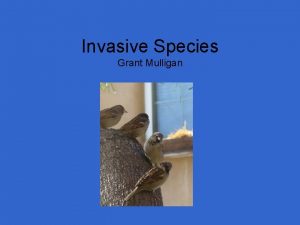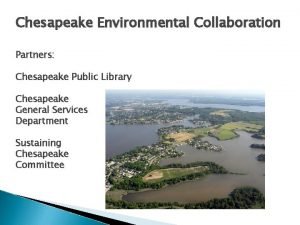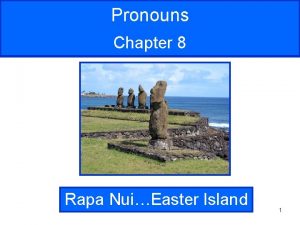Rapa Whelk An Invasive Species of the Chesapeake














- Slides: 14

Rapa Whelk An Invasive Species of the Chesapeake Bay

What is a Rapa Whelk? • • Large marine snail or gastopod May grow as large as a softball May live for more than 10 years Rapana venosa (refers to distinct horizontal black veins on some shells • Native to oceans near Korea and Japan

How’d they get to the Chesapeake Bay? • Discovered in the Black Sea in the mid 1940’s --probably transferred by humans • Since then they’ve moved to the Adriatic, Aegean and Mediterranean Seas • 1998: Discovered in the Chesapeake Bay • Probably carried in ballast water from Black Sea. Ships come to Newport News for coal and Black Sea region is a major consumer

Why Do We Care? • Predators-eat oysters and hard clams • Since they are new to the Bay, they have no enemies or predators--they may upset the ecological balance – Larvae: vulnerable to benthic predators (like all whelks) – Adults: Not vulnerable to sea turtles because of their larger size • Compete with native snails for food and habitat

How to know it’s a Rapa Knobbed Channeled

How to Stop the Invasion • Since September 1998, VIMS has offered a bounty to watermen who find and bring in Rapas-– $5 per live Rapa; $2 per dead Rapa • This has helped track their locations in the Bay as well as removing some of them • September 2009: Budget cuts forced the end of the program

How to be a Successful Alien Species • Must invade the habitat and find suitable living conditions/food • Must be able to REPRODUCE successfully

Stages of Whelk Life Cycle • Egg masses – Native whelks: laid in shallow water on sand or mud tidal flats – Rapas: laid on hard substrates-cemented into place

Time to Maturity • Native whelks: – Egg strings laid in fall and develop over the winter – Female may lay up to 3 egg strings totaling 18, 000 eggs • Rapas: – Eggs masses laid in spring and develop one month after being laid – Female may lay up to 10 egg masses per year totaling 2 million eggs

R or K selected? • Natives: more like K selected. WHY? • Rapas: more like r- selected. WHY?

Larval Differences • Native Whelks: Larvae are miniature replicas of adults--crawl on benthos. 4 mm in size: don’t crawl very far • Rapa: Swimming veliger (larvae) that lives in water column for 4 -5 weeks after hatching – – Eat plankton; stay in euphotic zone 0. 3 mm long when first hatched--float with currents Easily moved throughout the entire Bay with tides At end of this stage, sinks to bottom and transitions into miniature adults

Why is Veliger important? • Millions of larvae are in the water--some of them get swept into ballast water • Ships can travel from Norfolk to Europe in 2 weeks – Since swimming larvae live a month before becoming benthic; many can survive the trip and be introduced somewhere else!

Ecological Limits to Rapa Success • Planktonic veligers are vulnerable to predators that eat plankton: sea nettles, larval fish and adult filter feeding fish (menhaden) • Adult benthic form: young adults face predation by mud crabs, blue crabs (same as all whelks) • Large adults: no true predators because of their large size

Environmental Limits to Rapa Success • Salinity: veligers don’t do well in salinities of less than 10 ppt – Very few Rapas in upper parts of Virginia and Maryland rivers • Substrates: Hard substrates needed for egg masses and for veligers when they descend to the bottom – Adults need soft substrate to burrow in and need large clams to eat
 Invasive species exponential growth
Invasive species exponential growth Invasive species characteristics
Invasive species characteristics Invasive fungi
Invasive fungi Naturalized species definition
Naturalized species definition Are invasive species always bad
Are invasive species always bad Indiana invasive species council
Indiana invasive species council Invasive species investigator worksheet
Invasive species investigator worksheet Invasive species characteristics
Invasive species characteristics Invasive species act ontario
Invasive species act ontario Invasive species laws
Invasive species laws Invasive species investigator worksheet
Invasive species investigator worksheet Invasive species characteristics
Invasive species characteristics Invasive species compendium
Invasive species compendium Criptomoedas tcc
Criptomoedas tcc Nomades
Nomades
